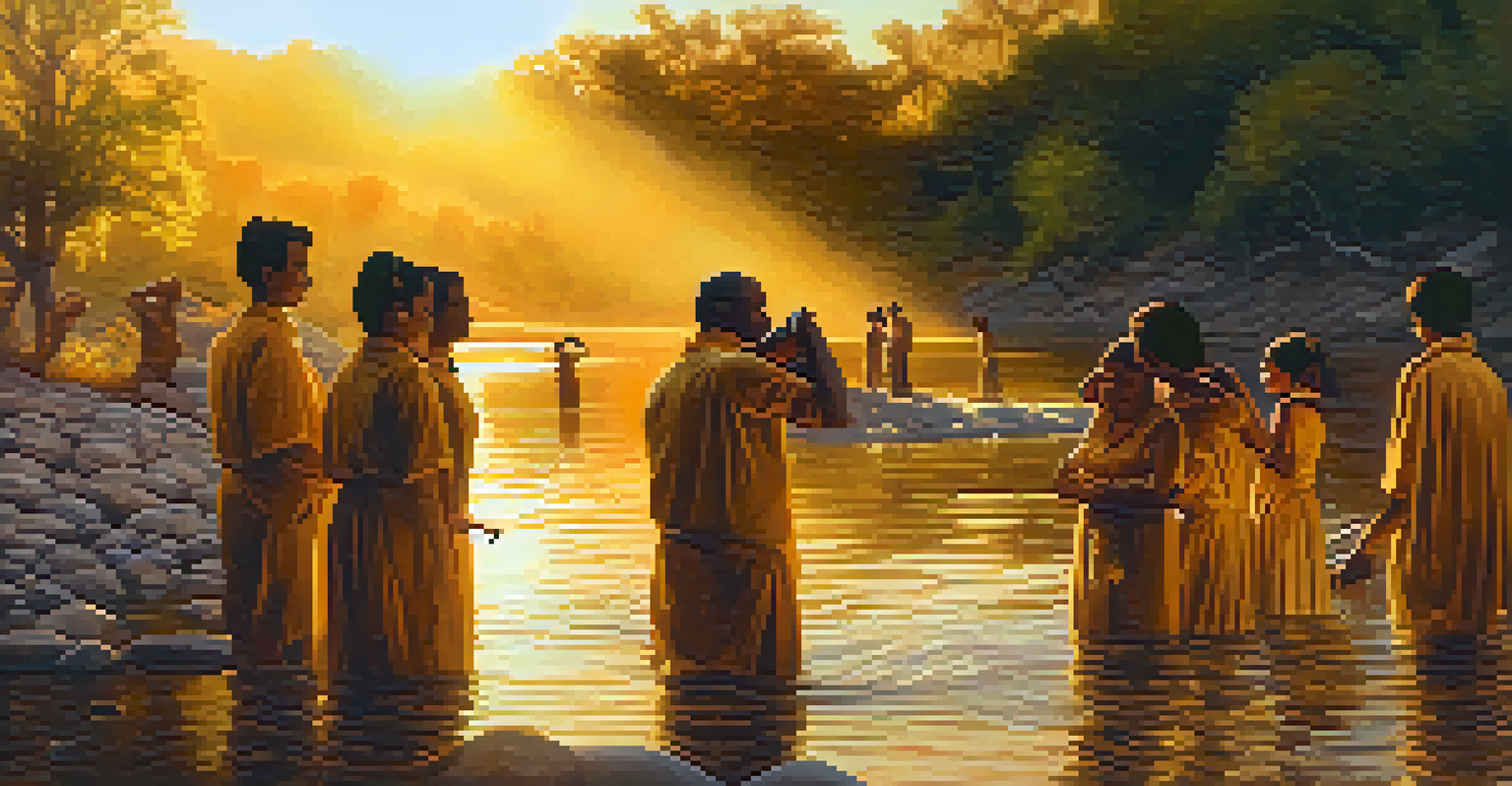The Role of Art in Representing Environmental Issues

Art as a Mirror to Environmental Challenges
Art has always reflected the world around us, and today, environmental issues are at the forefront. Artists use their creativity to showcase the beauty of nature while also highlighting the threats it faces, such as climate change and pollution. Through various mediums, from painting to sculpture, art can evoke emotions and provoke thoughts about our relationship with the environment.
Art is the most beautiful of all lies; it is a means of expressing the inexpressible.
For instance, a vivid mural depicting a dying forest can stir viewers' feelings of loss and urgency. This emotional connection often motivates people to take action, whether it’s through advocacy or lifestyle changes. By representing environmental challenges artistically, these pieces serve as powerful reminders of what is at stake.
Moreover, art can encapsulate complex scientific data in a way that is accessible and engaging. Through visual storytelling, artists can break down intricate environmental concepts, making them relatable to a wider audience that might not be well-versed in scientific jargon.
Historical Context of Art and Environmental Advocacy
The relationship between art and environmental advocacy isn't new; it has deep historical roots. Artists have long been inspired by the natural world, but the urgency of environmental issues has spurred a new wave of activism through art. From the Hudson River School painters in the 19th century to modern eco-artists, the narrative of nature's fragility has been woven into the fabric of art history.

In the 1960s and 70s, artists began to use their work to address pollution and environmental degradation more directly. This period saw the rise of Land Art and Earthworks, where artists created large-scale installations that interacted with the landscape itself. These movements not only raised awareness but also prompted discussions about land use and conservation.
Art Reflects Environmental Issues
Artists use their creativity to highlight the beauty of nature while addressing urgent environmental challenges like climate change and pollution.
Today, art continues to evolve with the times, addressing contemporary issues such as climate change and biodiversity loss. By looking back at how artists have historically engaged with these themes, we can better understand the potential of art to inspire change in today's world.
The Power of Visual Art in Environmental Education
Visual art plays a crucial role in environmental education by making abstract concepts tangible. Brightly colored infographics or interactive installations can simplify complex data, allowing audiences to grasp the urgency of issues like plastic pollution or deforestation. This visual representation is essential for engaging people who may not have a scientific background.
The earth is what we all have in common.
For example, an exhibit showcasing the effects of ocean acidification can use powerful imagery to illustrate its impact on marine life. By transforming scientific information into relatable visuals, artists can capture the attention of diverse audiences, sparking curiosity and prompting conversations.
Ultimately, visual art serves as a bridge between the scientific community and the general public. It democratizes knowledge, making important environmental issues accessible to everyone, regardless of their educational background.
Performance Art: Engaging Audiences in Environmental Discourse
Performance art offers a dynamic way to engage audiences with environmental issues. Unlike static forms of art, performances unfold in real-time, creating a shared experience that can be both powerful and moving. This immediacy can evoke strong emotional responses, making the message more memorable.
For instance, a performance that involves participants in a water conservation ritual can foster a sense of community and collective responsibility. As audiences witness the act, they may reflect on their own water usage and consider changes in their daily lives.
Visual Art Enhances Education
Through engaging visuals, art simplifies complex environmental data, making it accessible to the general public and sparking meaningful conversations.
Additionally, performance art can often incorporate elements of storytelling, allowing artists to weave personal narratives around environmental themes. This personal touch makes the issues more relatable and encourages viewers to see themselves as part of the solution.
Art Exhibitions: Platforms for Environmental Activism
Art exhibitions have become vital platforms for environmental activism, bringing together artists, activists, and the community. These events not only showcase artistic interpretations of environmental issues but also create spaces for dialogue and education. Through curated collections, visitors can explore various perspectives on the environment and its challenges.
For example, exhibitions focused on climate change may feature artists who use recycled materials, highlighting sustainability in both their art and message. This dual approach encourages viewers to think critically about their own consumption patterns and the impact on the planet.
Furthermore, exhibitions often collaborate with environmental organizations, amplifying the reach and impact of the message. By connecting art with activism, these events can inspire collective action and foster a deeper commitment to environmental causes.
Digital Art: Expanding the Reach of Environmental Messages
In the digital age, art has transcended physical boundaries, allowing environmental messages to reach a global audience. Digital art can take many forms, including social media campaigns, virtual reality experiences, and interactive installations. These innovative platforms engage viewers in new and exciting ways, making them active participants in the conversation.
For instance, a virtual reality experience that immerses users in a coral reef ecosystem can vividly illustrate the effects of climate change on marine life. This immersive storytelling not only educates but also elicits empathy, encouraging viewers to take action to protect these vulnerable ecosystems.
Digital Art Amplifies Activism
In the digital age, art transcends boundaries, allowing environmental messages to reach a global audience and engage them in activism.
Moreover, the shareability of digital art makes it a powerful tool for spreading awareness. Artists can reach millions through social media, turning their creations into catalysts for environmental discussion and activism worldwide.
The Future of Art in Environmental Activism
As environmental issues continue to escalate, the role of art in activism will likely grow even more significant. Artists will increasingly harness their creativity to challenge the status quo and inspire change, reflecting society's evolving relationship with nature. The future may see more collaborative efforts between artists and scientists, blending creativity with research to create compelling narratives.
Additionally, the rise of technology will continue to shape how art communicates environmental issues. From augmented reality to artificial intelligence, these tools can enhance storytelling and reach wider audiences, making the message more impactful.

Ultimately, the fusion of art and environmental activism holds immense potential. By harnessing the power of creativity, we can inspire individuals and communities to take action, fostering a more sustainable and harmonious relationship with our planet.